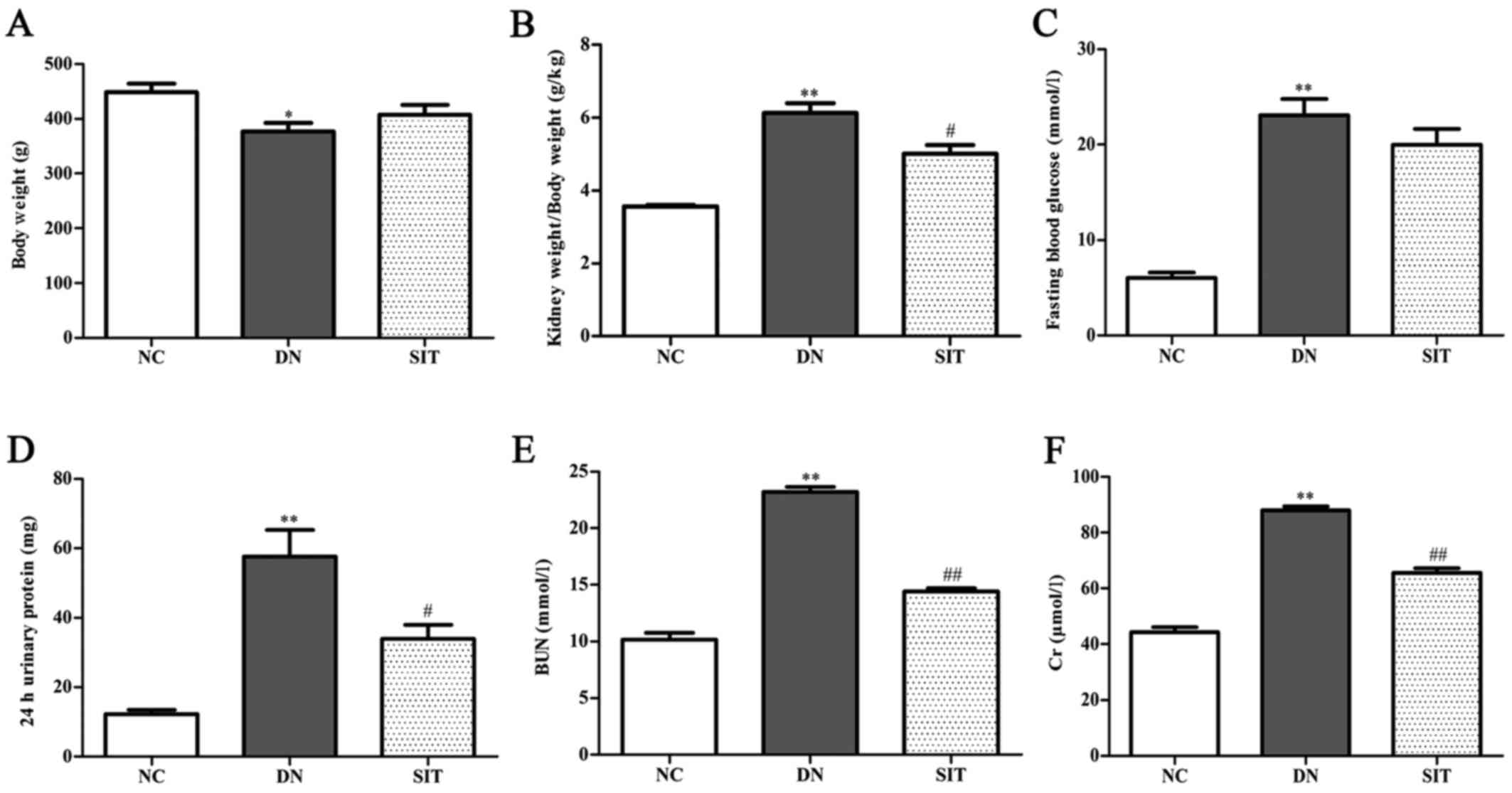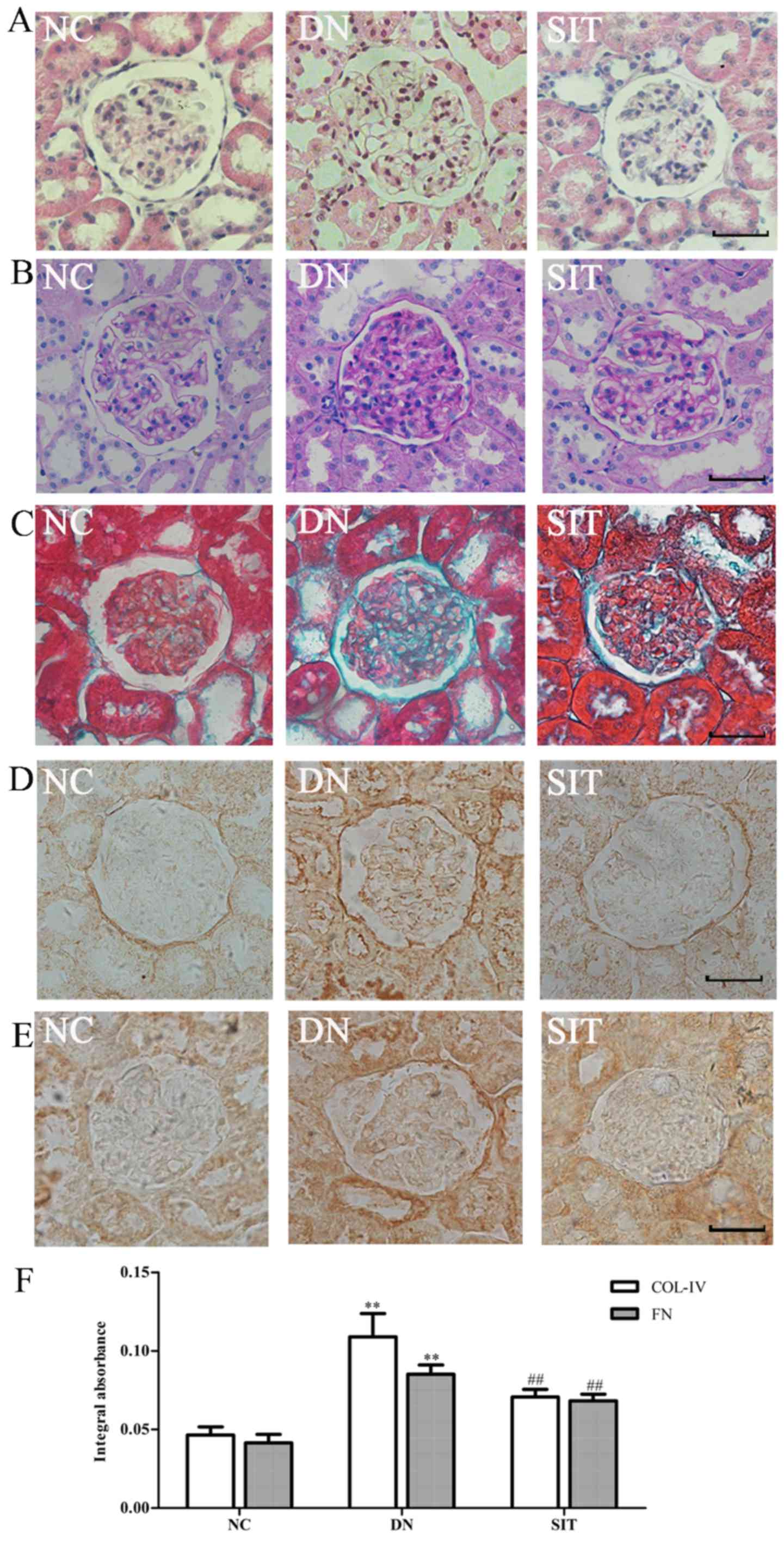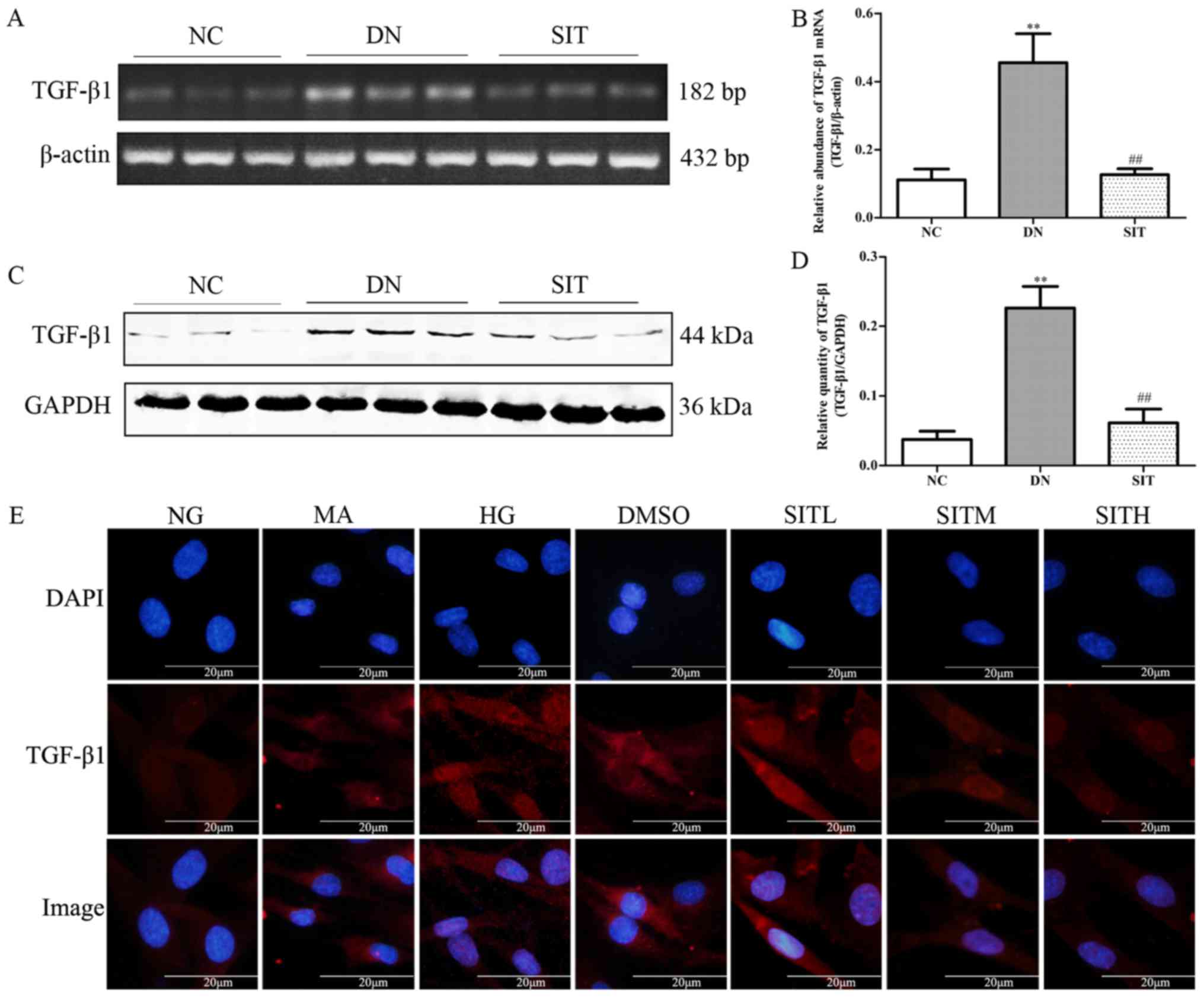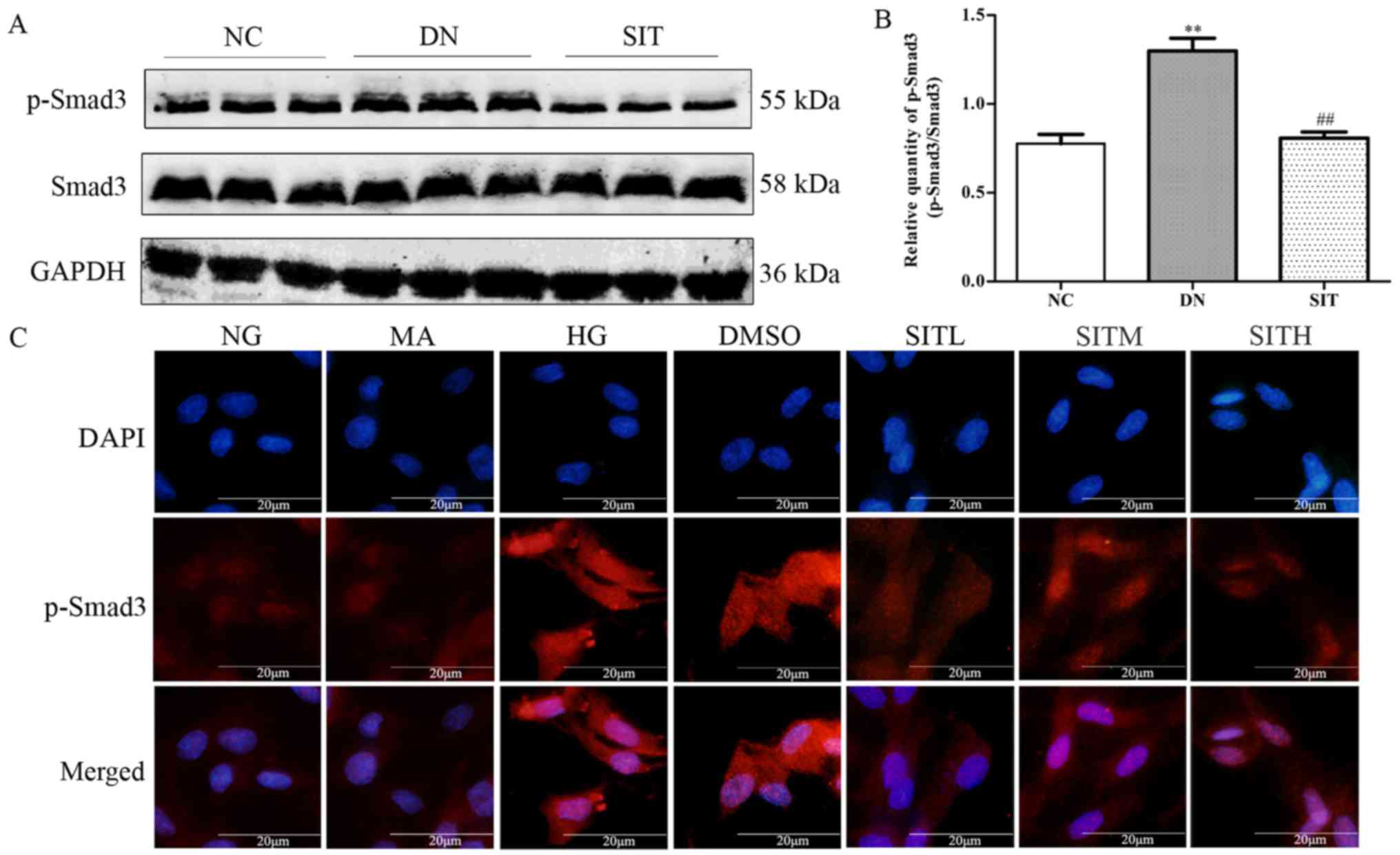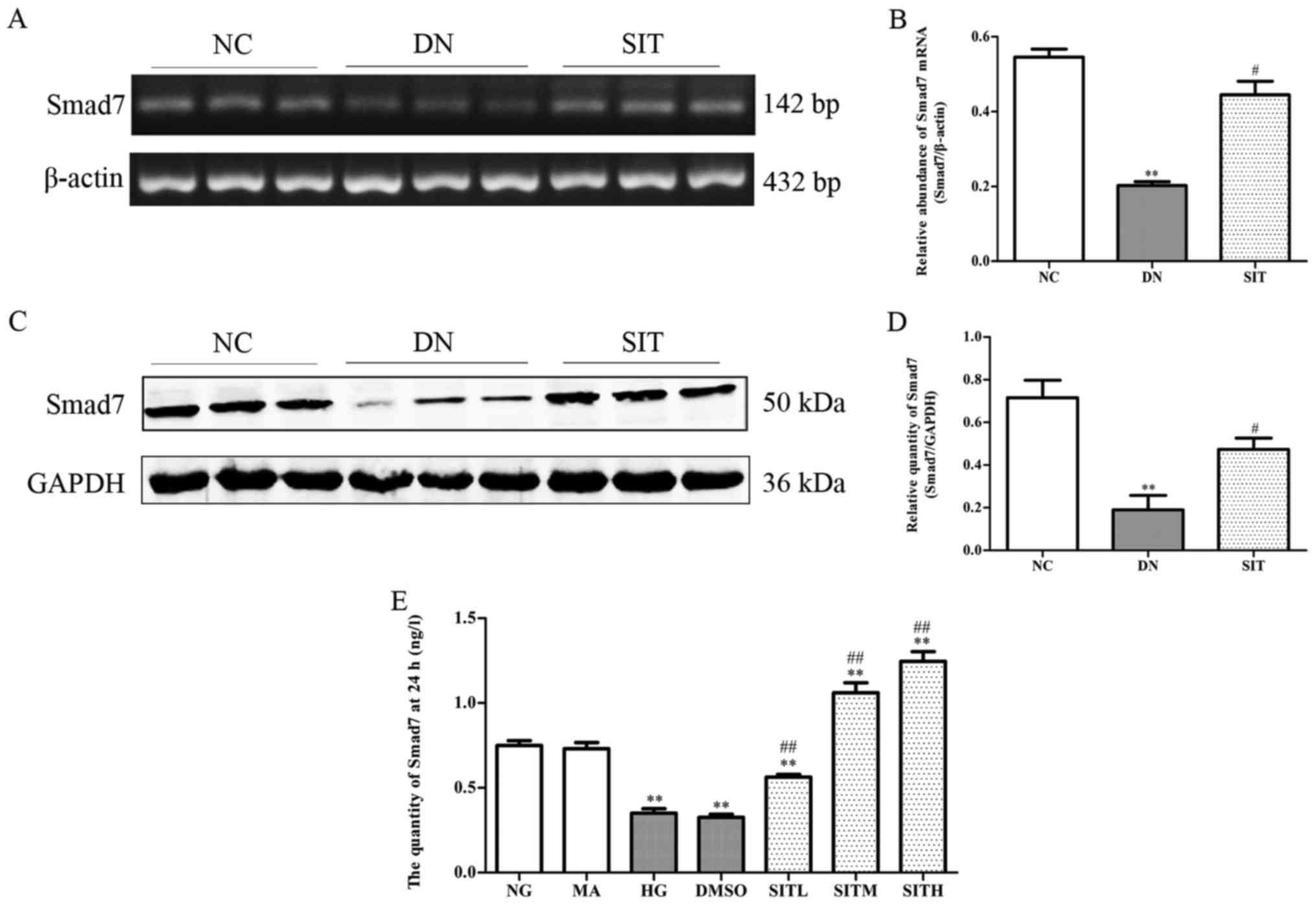|
1
|
Roberts KT: The potential of fenugreek
(Trigonella foenum-graecum) as a functional food and nutraceutical
and its effects on glycemia and lipidemia. J Med Food.
14:1485–1489. 2011. View Article : Google Scholar : PubMed/NCBI
|
|
2
|
Dixit P, Ghaskadbi S, Mohan H and
Devasagayam TP: Antioxidant properties of germinated fenugreek
seeds. Phytother Res. 19:977–983. 2005. View Article : Google Scholar : PubMed/NCBI
|
|
3
|
Kashihara N, Haruna Y, Kondeti VK and
Kanwar YS: Oxidative stress in diabetic nephropathy. Curr Med Chem.
17:4256–4269. 2010. View Article : Google Scholar : PubMed/NCBI
|
|
4
|
Reutens AT and Atkins RC: Epidemiology of
diabetic nephropathy. Contrib Nephrol. 170:1–7. 2011. View Article : Google Scholar : PubMed/NCBI
|
|
5
|
Collins AJ, Foley RN, Herzog C, Chavers B,
Gilbertson D, Ishani A, Kasiske B, Liu J, Mau LW, McBean M, et al:
US Renal Data System 2010 Annual Data Report. Am J Kidney Dis.
57(Suppl 1): A8e1–e526. 2011. View Article : Google Scholar
|
|
6
|
Kolset SO, Reinholt FP and Jenssen T:
Diabetic nephropathy and extracellular matrix. J Histochem
Cytochem. 60:976–986. 2012. View Article : Google Scholar : PubMed/NCBI
|
|
7
|
Tervaert TW, Mooyaart AL, Amann K, Cohen
AH, Cook HT, Drachenberg CB, Ferrario F, Fogo AB, Haas M, de Heer
E, et al Renal Pathology Society: Pathologic classification of
diabetic nephropathy. J Am Soc Nephrol. 21:556–563. 2010.
View Article : Google Scholar : PubMed/NCBI
|
|
8
|
Wang W, Huang XR, Li AG, Liu F, Li JH,
Truong LD, Wang XJ and Lan HY: Signaling mechanism of TGF-beta1 in
prevention of renal inflammation: Role of Smad7. J Am Soc Nephrol.
16:1371–1383. 2005. View Article : Google Scholar : PubMed/NCBI
|
|
9
|
Belghith M, Bluestone JA, Barriot S,
Mégret J, Bach JF and Chatenoud L: TGF-beta-dependent mechanisms
mediate restoration of self-tolerance induced by antibodies to CD3
in overt autoimmune diabetes. Nat Med. 9:1202–1208. 2003.
View Article : Google Scholar : PubMed/NCBI
|
|
10
|
Huang C, Kim Y, Caramori ML, Fish AJ, Rich
SS, Miller ME, Russell GB and Mauer M: Cellular basis of diabetic
nephropathy: II. The transforming growth factor-beta system and
diabetic nephropathy lesions in type 1 diabetes. Diabetes.
51:3577–3581. 2002. View Article : Google Scholar : PubMed/NCBI
|
|
11
|
Oujo B, Muñoz-Félix JM, Arévalo M,
Núñez-Gómez E, Pérez-Roque L, Pericacho M, González-Núñez M, Langa
C, Martínez-Salgado C, Perez-Barriocanal F, et al: L-Endoglin
overexpression increases renal fibrosis after unilateral ureteral
obstruction. PLoS One. 9:e1103652014. View Article : Google Scholar : PubMed/NCBI
|
|
12
|
Zhao M, Zheng S, Yang J, Wu Y, Ren Y, Kong
X, Li W and Xuan J: Suppression of TGF-β1/Smad signaling pathway by
sesamin contributes to the attenuation of myocardial fibrosis in
spontaneously hypertensive rats. PLoS One. 10:e01213122015.
View Article : Google Scholar
|
|
13
|
Sato S, Kawamura H, Takemoto M, Maezawa Y,
Fujimoto M, Shimoyama T, Koshizaka M, Tsurutani Y, Watanabe A, Ueda
S, et al: Halofuginone prevents extracellular matrix deposition in
diabetic nephropathy. Biochem Biophys Res Commun. 379:411–416.
2009. View Article : Google Scholar
|
|
14
|
Ballav C and Gough SC: Safety and efficacy
of sitagliptin-metformin in fixed combination for the treatment of
type 2 diabetes mellitus. Clin Med Insights Endocrinol Diabetes.
6:25–37. 2013. View Article : Google Scholar : PubMed/NCBI
|
|
15
|
Nade VS, Kawale LA and Patel KM:
Protective effect of sitagliptin and rosuvastatin combination on
vascular endothelial dysfunction in type-2 diabetes. Indian J Pharm
Sci. 77:96–102. 2015. View Article : Google Scholar : PubMed/NCBI
|
|
16
|
Brenner C, Kränkel N, Kühlenthal S, Israel
L, Remm F, Fischer C, Herbach N, Speer T, Grabmaier U, Laskowski A,
et al: Short-term inhibition of DPP-4 enhances endothelial
regeneration after acute arterial injury via enhanced recruitment
of circulating progenitor cells. Int J Cardiol. 177:266–275. 2014.
View Article : Google Scholar : PubMed/NCBI
|
|
17
|
Tsai TH, Sun CK, Su CH, Sung PH, Chua S,
Zhen YY, Leu S, Chang HW, Yang JL and Yip HK: Sitagliptin
attenuated brain damage and cognitive impairment in mice with
chronic cerebral hypo-perfusion through suppressing oxidative
stress and inflammatory reaction. J Hypertens. 33:1001–1013. 2015.
View Article : Google Scholar : PubMed/NCBI
|
|
18
|
El-Sahar AE, Safar MM, Zaki HF, Attia AS
and Ain-Shoka AA: Sitagliptin attenuates transient cerebral
ischemia/reperfusion injury in diabetic rats: Implication of the
oxidative-inflammatory-apoptotic pathway. Life Sci. 126:81–86.
2015. View Article : Google Scholar : PubMed/NCBI
|
|
19
|
Bachor TP, Marquioni-Ramella MD and Suburo
AM: Sitagliptin protects proliferation of neural progenitor cells
in diabetic mice. Metab Brain Dis. 30:885–893. 2015. View Article : Google Scholar : PubMed/NCBI
|
|
20
|
Picatoste B, Ramírez E, Caro-Vadillo A,
Iborra C, Ares-Carrasco S, Egido J, Tuñón J and Lorenzo O:
Sitagliptin reduces cardiac apoptosis, hypertrophy and fibrosis
primarily by insulin-dependent mechanisms in experimental type-II
diabetes. Potential roles of GLP-1 isoforms. PLoS One.
8:e783302013. View Article : Google Scholar : PubMed/NCBI
|
|
21
|
Gault VA, Lennox R and Flatt PR:
Sitagliptin, a dipeptidyl peptidase-4 inhibitor, improves
recognition memory, oxidative stress and hippocampal neurogenesis
and upregulates key genes involved in cognitive decline. Diabetes
Obes Metab. 17:403–413. 2015. View Article : Google Scholar : PubMed/NCBI
|
|
22
|
Chang MW, Chen CH, Chen YC, Wu YC, Zhen
YY, Leu S, Tsai TH, Ko SF, Sung PH, Yang CC, et al: Sitagliptin
protects rat kidneys from acute ischemia-reperfusion injury via
upregulation of GLP-1 and GLP-1 receptors. Acta Pharmacol Sin.
36:119–130. 2015. View Article : Google Scholar :
|
|
23
|
Sheela N, Jose MA, Sathyamurthy D and
Kumar BN: Effect of silymarin on
streptozotocin-nicotinamide-induced type 2 diabetic nephropathy in
rats. Iran J Kidney Dis. 7:117–123. 2013.PubMed/NCBI
|
|
24
|
Hou J, Zheng D, Zhong G and Hu Y:
Mangiferin mitigates diabetic cardiomyopathy in
streptozotocin-diabetic rats. Can J Physiol Pharmacol. 91:759–763.
2013. View Article : Google Scholar : PubMed/NCBI
|
|
25
|
Epp RA, Susser SE, Morissette MP, Kehler
DS, Jassal DS and Duhamel TA: Exercise training prevents the
development of cardiac dysfunction in the low-dose streptozotocin
diabetic rats fed a high-fat diet. Can J Physiol Pharmacol.
91:80–89. 2013. View Article : Google Scholar : PubMed/NCBI
|
|
26
|
Zhang M, Lv XY, Li J, Xu ZG and Chen L:
The characterization of high-fat diet and multiple low-dose
streptozotocin induced type 2 diabetes rat model. Exp Diabetes Res.
2008:7040452008. View Article : Google Scholar
|
|
27
|
Mega C, de Lemos ET, Vala H, Fernades R,
Oliveira J, Mascarenhas-Melo F, Teixeira F and Reis F: Diabetic
nephropathy amelioration by a low-dose sitagliptin in an animal
model of type 2 diabetes (Zucker diabetic fatty rat). Exp Diabetes
Res. 2011:1620922011. View Article : Google Scholar : PubMed/NCBI
|
|
28
|
Li WG, Chen YL, Chen JX, Qu L, Xue BD,
Peng ZH and Huang ZQ: Portal venous arterialization resulting in
increased portal inflow and portal vein wall thickness in rats.
World J Gastroenterol. 14:6681–6688. 2008. View Article : Google Scholar : PubMed/NCBI
|
|
29
|
Arumugam S, Thandavarayan RA, Veeraveedu
PT, Nakamura T, Arozal W, Sari FR, Giridharan VV, Soetikno V,
Palaniyandi SS, Harima M, et al: Beneficial effects of edaravone, a
novel antioxidant, in rats with dilated cardiomyopathy. J Cell Mol
Med. 16:2176–2185. 2012. View Article : Google Scholar : PubMed/NCBI
|
|
30
|
Wang M, Zhou W, Zhou X, Zhuang F, Chen Q,
Li M, Ma T and Gu S: Antidepressant-like effects of alarin produced
by activation of TrkB receptor signaling pathways in chronic stress
mice. Behav Brain Res. 280:128–140. 2015. View Article : Google Scholar
|
|
31
|
Brownlee M: The pathobiology of diabetic
complications: A unifying mechanism. Diabetes. 54:1615–1625. 2005.
View Article : Google Scholar : PubMed/NCBI
|
|
32
|
Shaw JE, Sicree RA and Zimmet PZ: Global
estimates of the prevalence of diabetes for 2010 and 2030. Diabetes
Res Clin Pract. 87:4–14. 2010. View Article : Google Scholar
|
|
33
|
Kanwar YS, Wada J, Sun L, Xie P, Wallner
EI, Chen S, Chugh S and Danesh FR: Diabetic nephropathy: Mechanisms
of renal disease progression. Exp Biol Med (Maywood). 233:4–11.
2008. View Article : Google Scholar
|
|
34
|
Wang JY, Yin XX, Wu YM, Tang DQ, Gao YY,
Wan MR, Hou XY and Zhang B: Ginkgo biloba extract suppresses
hypertrophy and extracellular matrix accumulation in rat mesangial
cells. Acta Pharmacol Sin. 27:1222–1230. 2006. View Article : Google Scholar : PubMed/NCBI
|
|
35
|
Gonzalez J, Klein J, Chauhan SD, Neau E,
Calise D, Nevoit C, Chaaya R, Miravete M, Delage C, Bascands JL, et
al: Delayed treatment with plasminogen activator inhibitor-1 decoys
reduces tubulointerstitial fibrosis. Exp Biol Med (Maywood).
234:1511–1518. 2009. View Article : Google Scholar
|
|
36
|
Xu W, Shao X, Tian L, Gu L, Zhang M, Wang
Q, Wu B, Wang L, Yao J, Xu X, et al: Astragaloside IV ameliorates
renal fibrosis via the inhibition of mitogen-activated protein
kinases and antiapoptosis in vivo and in vitro. J Pharmacol Exp
Ther. 350:552–562. 2014. View Article : Google Scholar : PubMed/NCBI
|
|
37
|
Li L, Yin Q, Tang X, Bai L, Zhang J, Gou
S, Zhu H, Cheng J, Fu P and Liu F: C3a receptor antagonist
ameliorates inflammatory and fibrotic signals in type 2 diabetic
nephropathy by suppressing the activation of TGF-β/smad3 and IKBα
pathway. PLoS One. 9:e1136392014. View Article : Google Scholar
|



